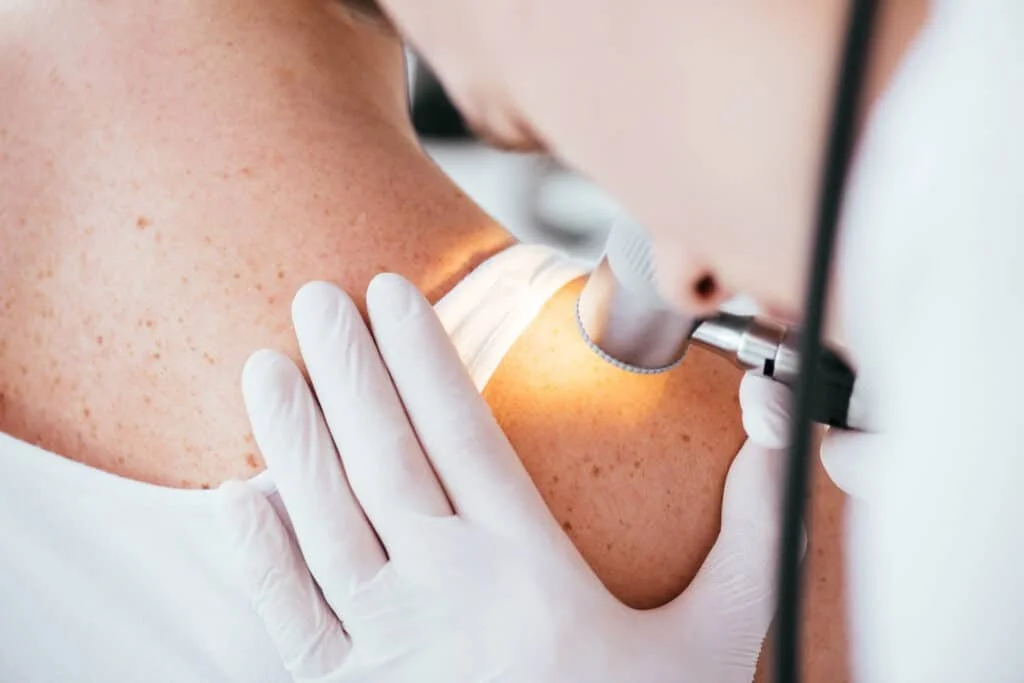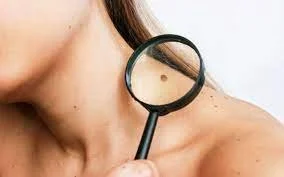Mole Monitoring in Medford: When to Worry and What to Watch
A mole that changes shape, color, or size might be more than just a cosmetic concern—it could be an early warning sign of skin cancer. At Summit Dermatology in Medford, OR, we encourage patients to practice routine mole monitoring and schedule annual full-body skin exams. These simple steps can lead to early detection of melanoma and other skin cancers when they’re most treatable.
If you've ever wondered whether a mole is “normal” or potentially dangerous, this guide will help you understand what to look for—and when to get it checked by a board-certified dermatologist
Why Mole Monitoring Matters
Moles are common—and most are harmless. But in some cases, they can develop into or signal skin cancer, particularly melanoma, the most dangerous form. Early detection is critical: when found early, melanoma has a 99% five-year survival rate. Left unchecked, it can spread to other parts of the body rapidly.
That’s why mole checks should be a regular part of your skin health routine, just like dental cleanings or physical exams. Even if you've had the same moles for years, changes can occur at any time.
What Is a Normal Mole?
Normal moles—also known as common acquired nevi—are typically:
Uniform in color (brown, tan, or flesh-colored)
Round or oval in shape
Less than 6 millimeters (about the size of a pencil eraser)
Stable in appearance over time
These moles are usually harmless and don’t require removal unless they become irritated, inflamed, or change significantly.
Warning Signs: The ABCDEs of Atypical Moles
Dermatologists use the ABCDE criteria to identify moles that could be suspicious or cancerous. If you notice any of the following, it’s time to book a skin check:
A – Asymmetry: One half of the mole doesn’t match the other half.
B – Border: Edges are irregular, ragged, or blurred.
C – Color: Varies across the mole; includes multiple shades of brown, black, red, blue, or white.
D – Diameter: Larger than 6 mm—but some melanomas can be smaller.
E – Evolving: Changes in size, shape, color, or begins to itch or bleed
Any mole that looks or feels different than others on your body—known as the “ugly duckling” sign—should be evaluated.
What Are Dysplastic Nevi (Atypical Moles)?
Dysplastic nevi are moles that look abnormal under a microscope but aren’t necessarily cancerous. However, having multiple atypical moles may increase your risk of melanoma, especially if you have a family history of skin cancer or a fair complexion.
These moles may:
Be larger than common moles
Have a mix of light and dark pigment
Have uneven borders
Appear on sun-exposed areas like the back, chest, or shoulders
Your dermatologist may recommend closer monitoring or mole mapping if you have several atypical nevi.
Full-Body Skin Exams: What to Expect
At Summit Dermatology, we offer comprehensive full-body skin exams to evaluate moles, growths, and any skin irregularities from head to toe. Here’s what happens during your visit:
We’ll review your personal and family history of skin cancer.
A dermatologist will examine every area of your skin, including the scalp, back, between toes, and other hard-to-see places.
We’ll use dermoscopy, a non-invasive tool that magnifies moles and spots for clearer analysis.
If anything looks concerning, we may recommend a biopsy, which is quick and done in-office.
For high-risk patients, we also offer mole mapping and photography to track changes over time.
FAQS
How often should I get a skin check?
Most adults should have a full-body skin exam once per year, or more frequently if you have a history of skin cancer, multiple atypical moles, or a family history of melanoma. If you notice a new or changing mole, don’t wait—get it evaluated sooner.
Is a changing mole always cancer?
Not necessarily. Some moles evolve as we age or due to hormonal shifts. However, sudden or dramatic changes should never be ignored. Your dermatologist can determine whether the mole is benign or needs further investigation.
Can moles be removed for cosmetic reasons?
Yes. If a mole is harmless but bothers you cosmetically, it can often be removed safely in-office. We’ll first examine it to ensure it's non-cancerous, then discuss your options for removal with minimal scarring.
What increases my risk of melanoma?
Risk factors include excessive sun exposure, use of tanning beds, fair skin, family history, weakened immune system, and having more than 50 moles or multiple atypical nevi. Regular checks are especially important if any of these apply to you.
Does insurance cover full-body skin exams?
Many insurance plans do cover skin cancer screenings—especially if there is a personal or family history of skin cancer or a symptomatic mole. Our staff can help verify your coverage before your visit.
Why Choose Summit Dermatology for Mole Checks in Medford, OR?
At Summit Dermatology, our board-certified dermatologists combine expertise with advanced tools to help detect skin cancer early and accurately. We’re not just treating skin—we’re saving lives. Our commitment to thorough care, patient education, and high-quality dermatologic services makes us a trusted resource in Southern Oregon.
When you choose us, you get:
Experienced dermatologists with a focus on skin cancer prevention
State-of-the-art mole monitoring and dermoscopy tools
Customized care plans for high-risk patients
A compassionate, respectful environment where every concern is taken seriously
Protect Your Skin—Schedule Your Mole Check Today
If you've noticed a changing mole or simply haven't had a skin check in over a year, now is the time. Early detection saves lives, and at Summit Dermatology, we’re here to make the process easy, thorough, and reassuring/.
🏢 Address: 1910 East Barnett Road, Suite 101, Medford, OR 97504
🕒 Clinic Hours: Monday – Thursday | 7:30 AM – 5:30 PM
📞 Phone: 541-200-2022
📍 Visit us in Medford, OR, or call today to schedule your full-body skin exam.
✨Peace of mind starts with one quick appointment.



